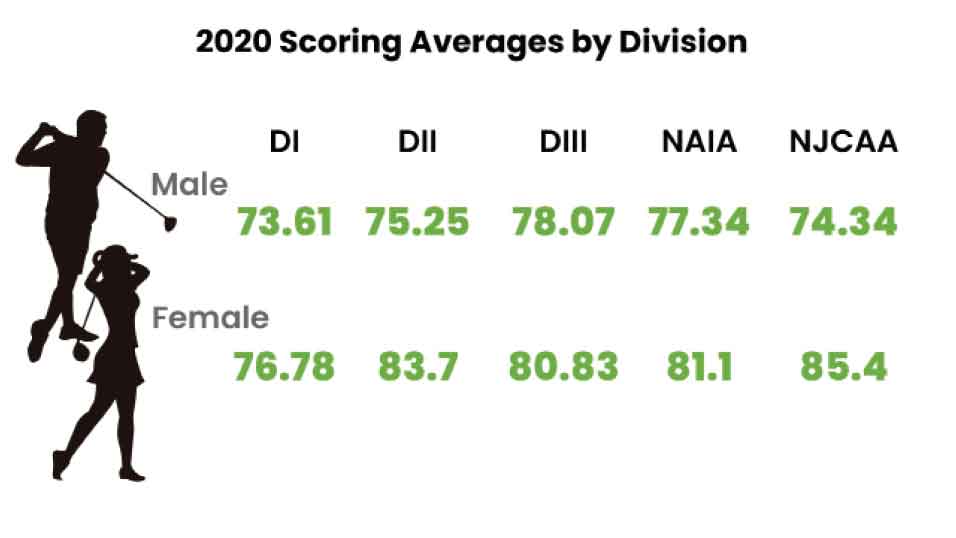
Players tee off at the 2021 NCAA Men’s Division I golf championship in Arizona.
Getty Images
According to the National High School Golf Association, there are over 220,000 high school golfers in the United States. Of that number, only about 20,000 golfers go on to compete collegiately, and an even smaller number — approximately 3.3 percent — play at the elite Division I level.
So what kind of scores does a player need to shoot if he or she wants to play collegiately? Junior Golf Hub, an online community for parents, coaches and junior golfers, set out to provide a definitive answer that question by compiling a first-of-its-kind study that analyzes the historical tournament data of more than 900 junior golfers who signed a National Letter of Intent in 2021.
The 2021 Signer Report provides a breakdown of signers’ demographics, course difficulty and high school progress, and also provides snapshots of specific individual case studies.
But its most helpful data is its breakdown of the average scores of signers who went on to play NCAA Division I, II, III, NAIA and NJCAA college golf.
Scoring average of signers
According to Junior Golf Hub’s report, to play D-I golf, male players shot an average tournament score of 73.61 while females shot 76.78. The study notes that this data is based on tournament scores shot in 2020, the year leading up to the player’s graduation year.

Junior Golf Hub
As you can see from the chart above, the difference between D-I golf and others is significant. The study notes that D-I male signers outperformed their signing peers by an average of more than three strokes per round, while D-I female signers outperformed them by an average of five strokes per round.
While plenty of successful professional golfers have come from non-D-I schools, there’s no question players who attend D-Is have a better chance of making it on Tour. Case in point: Both of this year’s U.S. Amateur champions, James Piot and Jensen Castle, came from D-I schools: Michigan State and the University of Kentucky, respectively.
For more details, you can purchase the full Junior Golf Hub 2021 Signer Report here.










